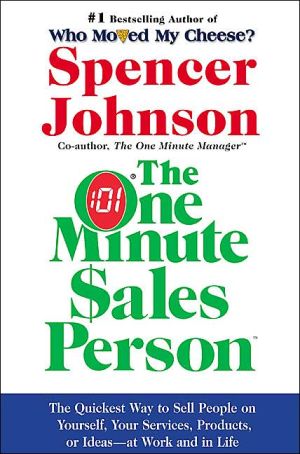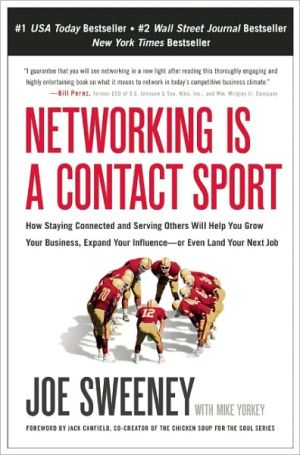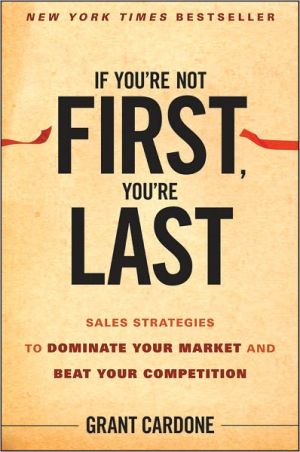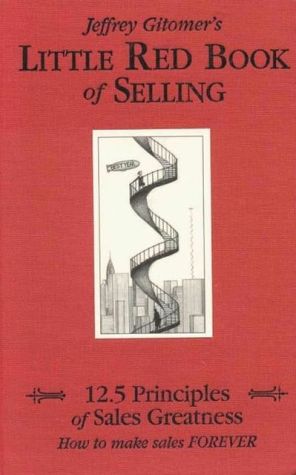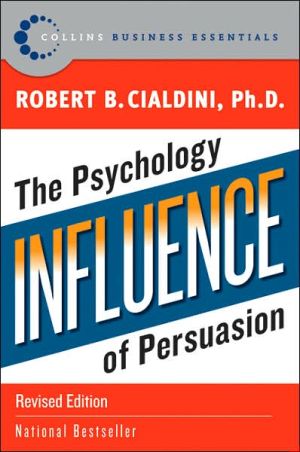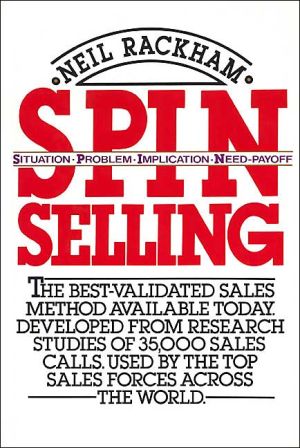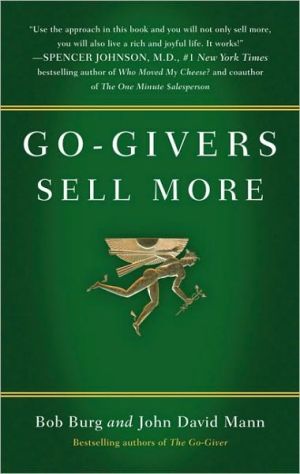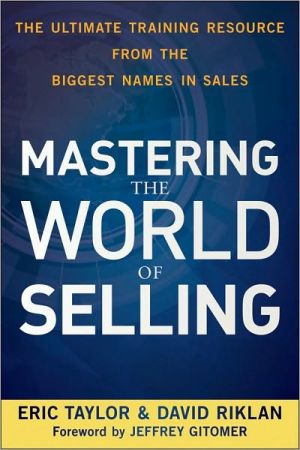One Minute Sales Person: The Quickest Way to Sell People on Yourself, Your Services, Products, or Ideas--at Work and in Life
In this newly released edition of one of his classic books, The One Minute Sales Person, Spencer Johnson, the author of the number one New York Times bestseller Who Moved My Cheese?, shows you how to sell your ideas, products, or services successfully! This is the book that has proved to be a must-have for the millions of people who were looking for the quickest way to improve their selling skills.\ In these changing times, Spencer Johnson, coauthor of The One Minute Manager®, shows you how...
Search in google:
In this newly released edition of one of his classic books, The One Minute Sales Person, Spencer Johnson, the author of the number one New York Times bestseller Who Moved My Cheese?, shows you how to sell your ideas, products, or services successfully! This is the book that has proved to be a must-have for the millions of people who were looking for the quickest way to improve their selling skills. In these changing times, Spencer Johnson, coauthor of The One Minute Manager®, shows you how the phenomenal One Minute® methods can bring real and lasting sales success with the least amount of time and effort. You will learn how to enjoy your job and your life more as you discover the effective secrets of "self-management," the integrity of "selling on purpose," and the liberating "wonderful paradox" of helping others get what they want so you can get what you need. The One Minute Sales Person is a clear, easy and invaluable guide that works for both you and the people you sell to, for your financial prosperity and personal well-being. In short, it is a classic Spencer Johnson bestseller that can help you enjoy more success with less stress. Publishers Weekly The nameless protagonist of this slender motivational parable originally published in 1984 suffers from the existential predicament of the salesman: "the quiet fear of rejection" caused by the nagging suspicion that "the customer did not want to buy the product." From a succession of sales gurus he learns the One Minute secret-it's not selling, it's "helping people...to feel good about what they buy." Johnson, author of the business mega-seller Who Moved My Cheese?, offers practical suggestions ranging from sensible (treat customers like people, listen carefully to their needs, use after-sale calls to generate good will and referrals) to questionable (use one-minute positive-thinking rituals to visualize successful sales calls) to sort of depressing (paste sales goals beside your shaving mirror). The "eighty/twenty rule" is paramount: "Eighty percent of our results are produced by about twenty percent of what we do." Unfortunately, the book embodies this rule a little too well: about twenty percent is truly solid advice, while eighty percent feels more like filler ("The man took out his notebook to record what he sensed was going to be useful information") padded further with extra-large type. (Oct.) Copyright 2003 Cahners Business Information.
\ Publishers WeeklyThe nameless protagonist of this slender motivational parable originally published in 1984 suffers from the existential predicament of the salesman: "the quiet fear of rejection" caused by the nagging suspicion that "the customer did not want to buy the product." From a succession of sales gurus he learns the One Minute secret-it's not selling, it's "helping people...to feel good about what they buy." Johnson, author of the business mega-seller Who Moved My Cheese?, offers practical suggestions ranging from sensible (treat customers like people, listen carefully to their needs, use after-sale calls to generate good will and referrals) to questionable (use one-minute positive-thinking rituals to visualize successful sales calls) to sort of depressing (paste sales goals beside your shaving mirror). The "eighty/twenty rule" is paramount: "Eighty percent of our results are produced by about twenty percent of what we do." Unfortunately, the book embodies this rule a little too well: about twenty percent is truly solid advice, while eighty percent feels more like filler ("The man took out his notebook to record what he sensed was going to be useful information") padded further with extra-large type. (Oct.) Copyright 2003 Cahners Business Information.\ \
